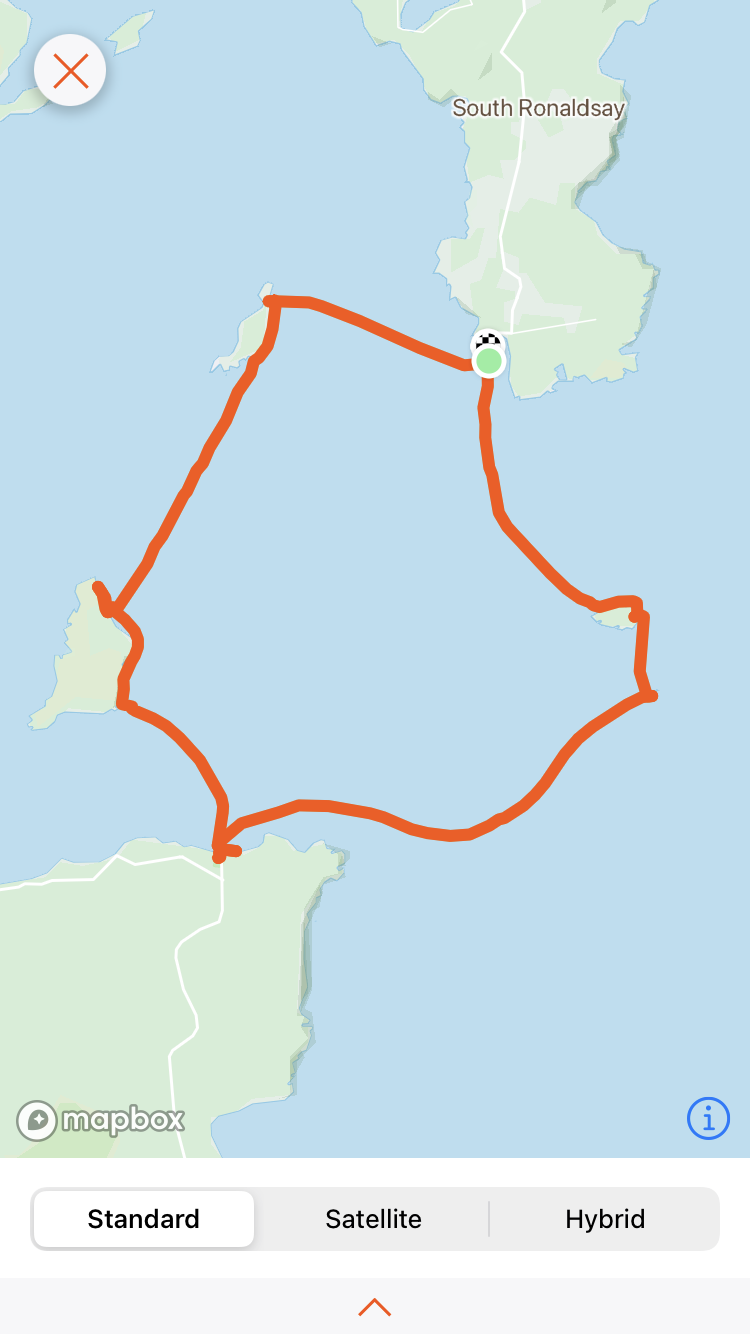An article by myself published in The Paddler October 2021 (SCA Magazine)

Tackling the Pentland Pentagon: A DOUBLE CROSSING OF THE NOTORIOUS PENTLAND FIRTH
Alice McInnes and Kate Duffus challenged themselves with a well-planned, double crossing of the Pentland Firth… The best plans in kayaking are usually nuggets of ideas that lie dormant until the alignment of several factors allow them to happen. To cross the notorious Pentland Firth requires favourable tides, weather, flexibility on timings, a certain level of paddling fitness, advanced tidal planning and a willingness to take on the challenge. To do it twice in a day needs all this plus motivation, imagination and maybe a few missing shillings.
I was on Orkney paddling with Kate Duffus for a few days before the Paddle Orkney symposium in July 2021. I had tentatively floated the idea of a crossing of the Firth several months before, envisaging huge whirlpools and fearsome eddy lines. Kate and I paddled around the south end of South Ronaldsay on our first day and the Pentland Skerries looked tantalisingly close. Wisely resisting the urge to paddle across the fast flowing tides late that afternoon, we returned to Kirkwall fired up for some serious tidal planning.
Two days later, armed with vectors and a plan, we set off from Burwick, South Ronaldsay at 8am, in thickish fog, only just able to make out the outline of the distinctive double lighthouses of the Skerries.
Our route was a clockwise circuit taking in the Pentland Skerries around slack water, then onto John o’ Groats for lunch, crossing to the islands of Stroma and Swona and back to Burwick. We planned to make use of the tides in our favour, avoid paddling against the flow, and not be swept past any bits of land! The chart shows speeds over 8 knots in several places so getting swept in the wrong direction was a real threat. It’s a great feeling on the water when you are able to adjust the plan on the fly.
Kate and I had the vectors planned with precise timings for starting each crossing, and armed with this, we continually verbalised what we were seeing and were able to adjust plans based on these observations. Crossing a main shipping lane in the fog is not generally advised. Checking my AIS app on the intermittent 4G at the Skerries, I saw that two ships travelling north were going to be quite close. Due to the tides, we didn’t have much leeway to significantly adjust our speed or direction. But on such days you just get on with it, we didn’t have much choice anyway as the tide was starting to flow. We paused to enjoy some bottlenose dolphins playing in the tide and had a few anxious minutes playing ‘bow angle roulette’ with one large vessel, before we passed in front of it and onwards without drama to JOG, to complete our first crossing of the Firth – half way!
After a rest and a big lunch, we set out full of chips, chilli and coffee for the return leg. We needed another gear in terms of speed to hit Stroma’s south-east corner, as the tide was forcing us south and west in the clearing fog. Kate’s deck GPS told us that our speed was zero km/h and she was pretty clear what was needed – so I mustered my best forward paddling sprint technique to follow Kate across the fast flowing water just above the rapid.
The crossing to Swona was still to come. After a chat on the phone with the coastguard, and a walk up to the north end of the island to see our target, we set off. We were ahead of our plan, so we did a quick vector on the OS maps on the deck with our fingers, ‘2 knots west-ish, so 70º look about right?” and we ‘eyeballed’ it before picking up a useful transit of a white house and the edge of Swona some 7km away. Many times I’d looked at the chart at the channel between Swona and South Ronaldsay, and envisaged standing waves and turbulent waters dragging me out to the North Sea. On this day, there was none of that as two weary paddlers dawdled across perhaps a little too relaxed as we needed one last big effort to cross the increasing southerly flow and avoid getting swept past the beacon and out to sea!
An all-round incredible day. Around 40km of paddling at or above a consistent speed of three nautical miles per hour, and highly recommended with the right Scottish paddling conditions, the right buddy and pennies for lunch in JOG.

If you have any paddling ambitions that you’d like to discuss with me, please .
